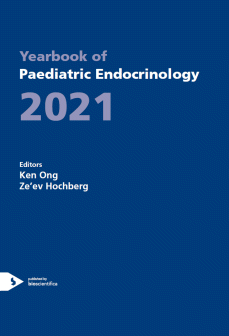1. Pituitary and Neuroendocrinology
Development/Ontogeny
ey0018.1-2 | Development/Ontogeny | ESPEYB18
1.2. Single nucleus multi-omics regulatory landscape of the murine pituitary
F Ruf-Zamojski , Z Zhang , M Zamojski , GR Smith , N Mendelev , H Liu , G Nudelman , M Moriwaki , H Pincas , RG Castanon , VD Nair , N Seenarine , MAS Amper , X Zhou , L Ongaro , C Toufaily , G Schang , JR Nery , A Bartlett , A Aldridge , N Jain , GV Childs , OG Troyanskaya , JR Ecker , JL Turgeon , CK Welt , DJ Bernard , SC Sealfon
ey0018.1-3 | Development/Ontogeny | ESPEYB18
1.3. Lineage analysis reveals an endodermal contribution to the vertebrate pituitary
P Fabian , KC Tseng , J Smeeton , JJ Lancman , PDS Dong , R Cerny , JG Crump
ey0018.1-4 | Development/Ontogeny | ESPEYB18
1.4. Rathke's cleft-like cysts arise from Isl1 deletion in murine pituitary progenitors
ML Brinkmeier , H Bando , AC Camarano , S Fujio , K Yoshimoto , FS de Souza , SA Camper
ey0018.1-5 | Development/Ontogeny | ESPEYB18
1.5. Cellular and molecular properties of neural progenitors in the developing mammalian hypothalamus
X Zhou , S Zhong , H Peng , J Liu , W Ding , L Sun , Q Ma , Z Liu , R Chen , Q Wu , X Wang
ey0018.1-6 | Development/Ontogeny | ESPEYB18
1.6. The histone H3-lysine 4-methyltransferase Mll4 regulates the development of growth hormone-releasing hormone-producing neurons in the mouse hypothalamus
C Huisman , YA Kim , S Jeon , B Shin , J Choi , SJ Lim , SM Youn , Y Park , K C M , S Kim , SK Lee , S Lee , JW Lee
ey0018.1-7 | Development/Ontogeny | ESPEYB18
1.7. Activating mutations in BRAF disrupt the hypothalamo-pituitary axis leading to hypopituitarism in mice and humans
A Gualtieri , N Kyprianou , LC Gregory , ML Vignola , JG Nicholson , R Tan , SI Inoue , V Scagliotti , P Casado , J Blackburn , F Abollo-Jimenez , E Marinelli , REJ Besser , W Hogler , I Karen Temple , JH Davies , A Gagunashvili , ICAF Robinson , SA Camper , SW Davis , PR Cutillas , EF Gevers , Y Aoki , MT Dattani , C Gaston-Massuet




